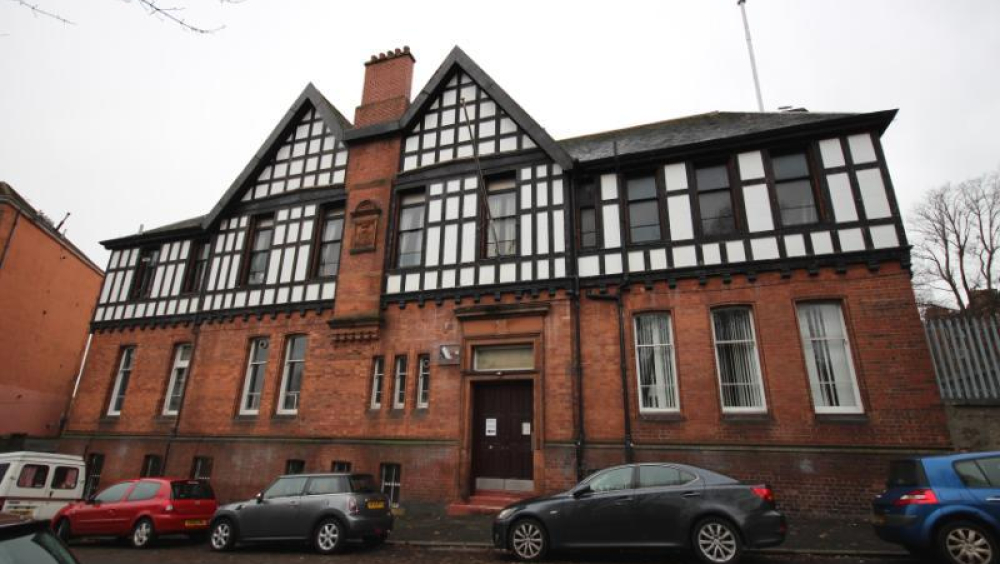Lanarkshire Regimental Drill Hall
19 September 2025 (10:00 - 14:00)
20 September 2025 (10:00 - 14:00)
Join us at the drill hall headquarters for age-appropriate activities, including supervised access to military vehicles and equipment. Hear first-hand from soldiers about their experiences, and finish with a guided tour of the historic Officers’ Mess.
The Lanarkshire Regimental Headquarters at Jardine Street will arrange activities including an opportunity to handle an “Air Soft range (replica weapon system), get to grips with real BOWMAN radio equipment in its various forms, learn about Cyber, Emerging Army Tech and speak to the soldiers about their experiences.
Concluding with a tour of the Historic Officers’ Mess built in 1894 designed by Robert Alexander Bryden and previous station of Lieutenant John Chard VC (Victoria Cross), Royal Engineers, in Command at the Battle of Rourke’s Drift (Film – Zulu).
We will have a variety of events for young people, as well as adults. There are two sessions each day and booking is required to attend.
Overview:
The Lanarkshire Regimental Headquarters at Jardine Street is a good example of a drill hall headquarters building, designed by Robert Alexander Bryden, who was also a Major in the Battalion Lanarkshire Regiment. The building has not been significantly altered and for its building type it is in an unusual brick and Tudor style, with very good detailing, such as the shaped brick windows surrounds, the half timbering and the decorative chimney stacks. The interior is of a very good quality, including timber panelled officers' mess, decorative iron work to the staircase as well as an internal hall on the upper floor.
21 Jardine Street was built in 1894 and falls within the most prolific period of drill hall construction in Scotland from 1880 to 1910. It was often the case that drill hall architects were in the forces and linked to the buildings they designed. Robert Alexander Bryden (1841-1906) was a Glasgow based architect who throughout the latter half of the 19th century largely worked with the Glasgow practice of Clerk and Bell. Bryden had become a Major in the 1st Lanarkshire Volunteers in 1865 and was therefore well placed to design the new headquarters for his own regiment. This is the only known drill hall or headquarters building he designed in his career.
In the 20th century changes in warfare and weaponry made many of the earlier drill halls redundant and subject to demolition or change to a new use. Around 344 drill halls are believed to have been built in Scotland of which 182 are thought to survive today, although few remain in their original use. Drill halls are an important part of our social and military history. They tell us much about the development of warfare and the history of defending our country. They also, unusually for a nationwide building programme, were not standardised and were often designed by local architects in a variety of styles and they also have a part to play in the history of our communities.
The requirements for drill halls were basic – a large covered open space to train and drill as well as a place for the secure storage of weapons. The vast majority of drill halls were modest utilitarian structures. Most drill halls conformed to the pattern of an administrative block containing offices and the armoury to store weapons along with a caretaker or drill instructors accommodation, usually facing the street. To the rear would be the drill hall itself. Occasionally more extensive accommodation was required, such as for battalion headquarters where interior rifle ranges, libraries, billiards rooms, lecture theatres and bars could all be included.
There are 10-14 stairs to climb with banister for support. We cannot provide manual handling nor a stair-lift as this is Defence Estates.
We can fill up water bottles.
On-street parking.
We are located just off the Kelvin Walkway, behind Glasgow Academy, a 5 min walk from Maryhill Road, Great Western Road and Kelvinbridge Underground station.
We are exempt Equalities Act for Age and Disability (incl Access).
Address
21 Jardine Street, Regimental Headquarters, Glasgow, G206JU
